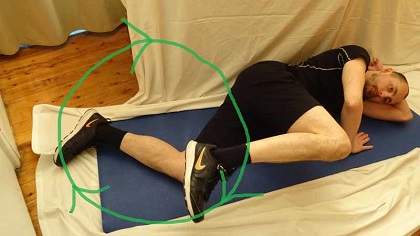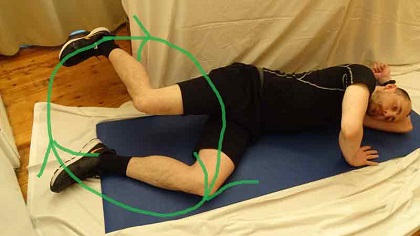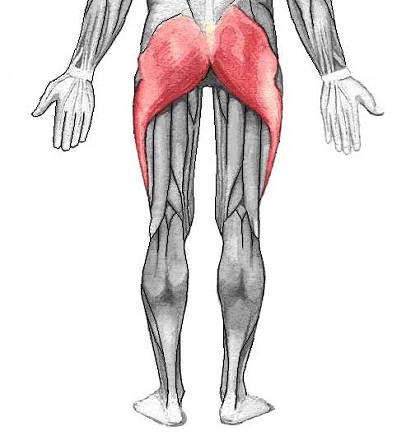
Your gluteal muscles have some important features:
• are the main muscles used for walking, when moving legs from hips
• essential for the stability of the hips when walking. Without them you would topple over to one side.
• allow you to extend your back
• allow you to stand from a sitting position
• Gluteus maximus supports the extended (straight) knee. It does this via the iliotibial tract (ITB). This is the fibrous band of connective tissue that runs down the outer side of the thigh.
Gluteal dysfunction and weakness can have quite a large effect on the functional physiology of the body. Glute weakness can cause some of the following:
• lower back pain – over-using lumbar muscles to compensate
• hamstring over-use (tightness and pain) –> can also then lead to pelvis rotation –> pressure and pain in lower back
• knee pain from reduced stability
• tight hip flexor
• ankle problems
• plantar faciitis
As humans, we tend to find the easiest and laziest way to do things. Perhaps this is energy conservation. For example, when picking something up from the ground we tend to lean over with a flexed back instead of bending the knees and squatting down. The gluteal muscles can simply just get deconditioned and weak through lack of use. The simple solution is to wake them up again and do a few exercises. Even doing something as simple as squeezing your butt cheeks together while waiting for the bus can help (try 3 sets of 10 reps) or whenever you remember during the day, for example whilst waiting for the jug to boil. Something this simple can help the brain and glutes make a better neurological connection and “switch on” better for movement patterns.
Pain can also be a limiting factor. There could be any number of pathologies in the hips and back creating a painful situation that limits movement. Pain is remarkable in that it causes an inhibitory effect on muscles in the affected area. Hence, once the pain has subsided the muscles can still be inhibited or have decreased motor response (“switched off”). Again, doing a few floor-based gluteal exercises can help to retrain the connection with the brain and the bum muscles.
For example, the correct firing order for leg extension (lying on tummy and raising leg up towards ceiling) is:
Glute -> Hamstring – > quatratus lumborum and lumbar muscles.
However, with a dysfunctional glute it can become:
Hamstring + lumbar muscles.
Hence, much more strain is placed on the surrounding structures.
Anatomy:
Gluteus maximus – the largest muscle in the body – forms the buttock cheeks.
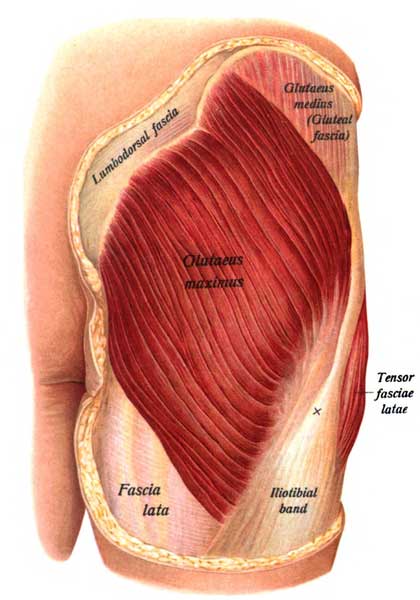
Gluteus medius and minimus – lateral stabilisers. These muscles are located on the sides of the hips. They wrap around the bony part of the thigh bone (trochanter of the femur).
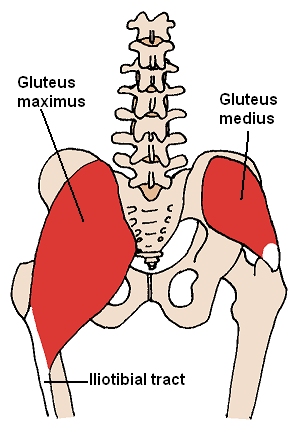
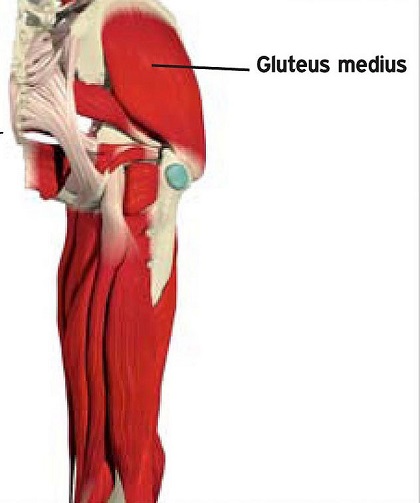
Gluteus minimus
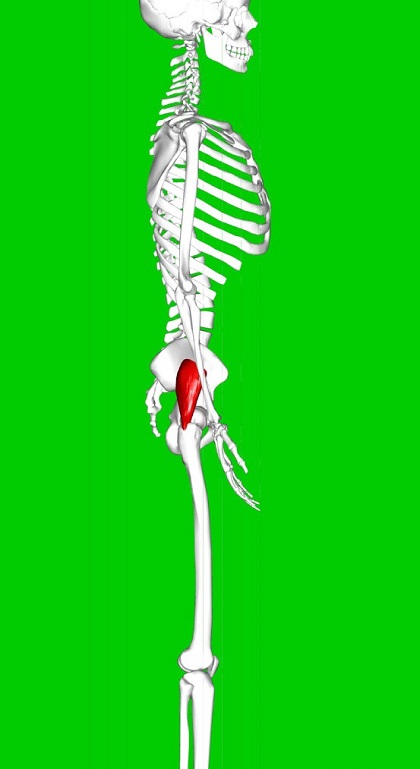
Training the glutes
Strong, healthy glutes are important for proper movement and health maintenance. However, there can be other problems that are present in the pelvic/lumbar region that need to be addressed before any rehab training and exercise should be performed. Muscular fatigue (“feel the burn”) is ok but acute and neuralgic pain is telling you some damage is going on. Please always train being mindful and respectful of your body’s abilities.
Below are a few glutes floor-based exercises to get you started.
Lying on the side, back should be straight (neutral spine), and all the movement should be occurring in the leg that is facing the ceiling. You can support your head and neck with one arm, and have something soft to lie on. You can use a yoga mat or towels. Please note it should not be painful to do these exercises. After a while you should feel muscular fatigue. However, if you experience any acute pain or nerve pain please stop and get assessed by a health professional.
Do each exercise 10 times then roll over to other side and complete 10 times on other leg. Repeat this for each exercise. Once you have done them all, go back to the top and re-do them. Try doing 10 minutes in total first. Then as you progress you can extend the time to 20 mins. Aim to do the exercises daily or every second day.
Clam : Open your legs just like a clam would open its shell
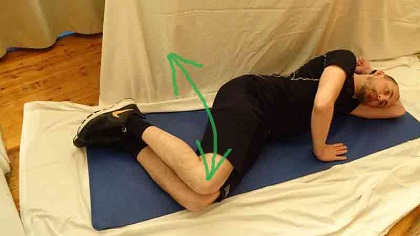
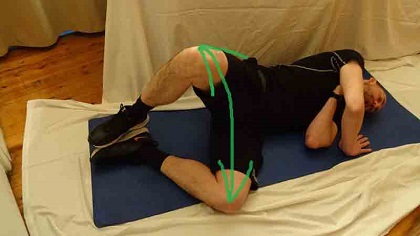
Side lift : Point your toes towards the ground. It helps activate more of the glute muscle. Then move your straight up as high towards the ceiling as you can. Then move it down again. Repeat.
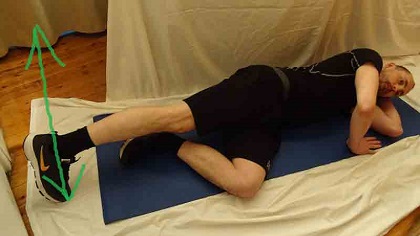
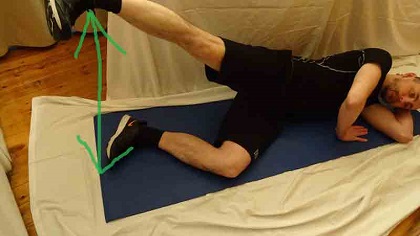
Toe taps: Point your toes towards the ground. It helps activate more of the glute muscle. Tap your big toe in front of you and then swing your straight leg back and tap behind you. Repeat.
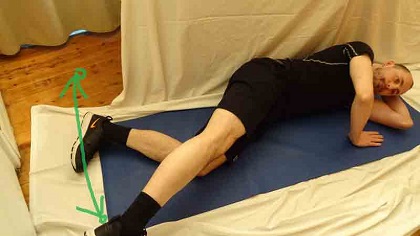
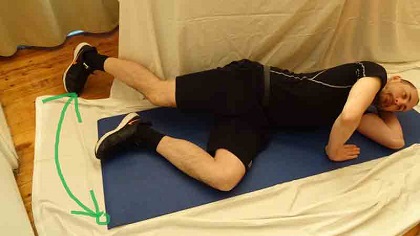
Kick: Just like kicking a football with a straight leg.
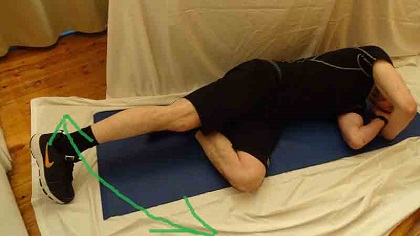
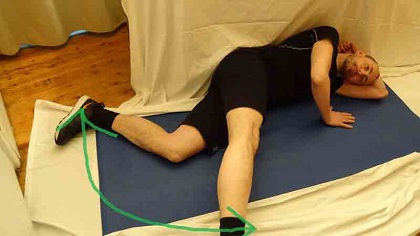
Bike circles: Like peddling on a bicycle. Move your leg in a circular fashion as you would when riding a bike. Go forwards 10 rotations then backwards 10 rotations.
